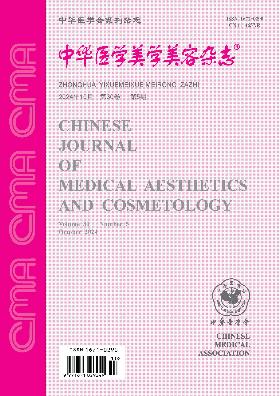汉族年轻女性三维面部形态特征的初步研究
引用次数: 0
摘要
目的探讨基于三维表面成像技术的面部三维形态特征评估方法的可行性。方法根据入院标准,从我科三维面部图像数据库中选取34名有魅力的中国年轻女性和172名健康参考年轻女性的三维面部图像。对于这些图像,使用三维表面成像技术结合三维坐标系计算包括面部高度、宽度、凸度和凹度在内的人体测量面部。分析了吸引组和对照组的差异,并初步总结了各组的面部形态特征。结果两组均符合中韵律学标准,不符合“面部垂直三等分五分规则”。与对照组相比,有吸引力的组的前脸框架相对较窄,上脸更圆、更丰满。与对照组相比,它们的花腔间宽度也较小。此外,有吸引力的组表现出更突出的鼻子,更丰满和突出的内侧脸颊。此外,与对照组相比,吸引组的上唇突出较少,下巴后缩较少。结论应用三维表面成像技术评估面部形态是一种方便可行的方法。面部矢状面凹凸度的评估是面部形态特征评估中不可或缺的一部分。关键词:成像,三维;人体测量;面部;坐标系;矢状位本文章由计算机程序翻译,如有差异,请以英文原文为准。
Three-dimensional facial morphological features of young Han Chinese women: A preliminary study
Objective
To explore the feasibility of our method on assessing the three-dimensional facial morphological features based on three-dimensional surface imaging techniques.
Methods
According to the admission criteria, three-dimensional facial images of 34 attractive young Chinese women and 172 healthy reference young women were selected from the three-dimensional facial images database of our department. For those images, anthropometric facial measurements including facial height, width, the degree of convexity and concavity were computed using three-dimensional surface imaging techniques combined with three-dimensional coordinate system. The variance between attractive group and reference group was analyzed and the facial morphological features of each group were preliminarily summarized.
Results
Both groups met the criteria of mesoprosopy, not the " vertical facial trisection and rule of fifths" . The attractive group had a relatively narrow anterior facial frame, a more rounded and full upper face compared with the reference group. They also had smaller intercanthal width compared with the reference group. Moreover, the attractive group showed more prominent nose, more full and prominent medial cheek. In addition, the attractive group shared less protruded upper lips and less retruded chin compared with the reference group.
Conclusions
Assessing facial morphology using three-dimensional surface imaging techniques is a convenient and feasible method. The evaluation of sagittal facial convexity and concavity is an indispensable part of facial morphology features assessment.
Key words:
Imaging, three-dimensional; Anthropometry; Face; Coordinate system; Sagittal position
求助全文
通过发布文献求助,成功后即可免费获取论文全文。
去求助
来源期刊
自引率
0.00%
发文量
4641
期刊介绍:
"Chinese Journal of Medical Aesthetics and Cosmetology" is a high-end academic journal focusing on the basic theoretical research and clinical application of medical aesthetics and cosmetology. In March 2002, it was included in the statistical source journals of Chinese scientific and technological papers of the Ministry of Science and Technology, and has been included in the full-text retrieval system of "China Journal Network", "Chinese Academic Journals (CD-ROM Edition)" and "China Academic Journals Comprehensive Evaluation Database". Publishes research and applications in cosmetic surgery, cosmetic dermatology, cosmetic dentistry, cosmetic internal medicine, physical cosmetology, drug cosmetology, traditional Chinese medicine cosmetology and beauty care. Columns include: clinical treatises, experimental research, medical aesthetics, experience summaries, case reports, technological innovations, reviews, lectures, etc.

 求助内容:
求助内容: 应助结果提醒方式:
应助结果提醒方式:


